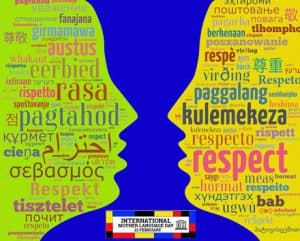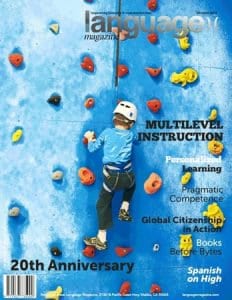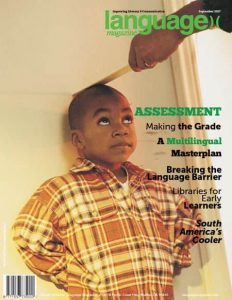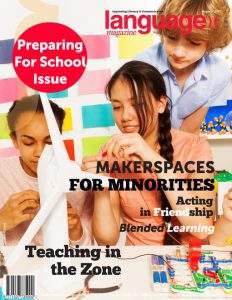
 Following in President Reagan’s footsteps, the Trump administration has announced the U.S. intention to withdraw from United Nations Educational Scientific Cultural Organization (UNESCO) in January 2019, citing financial reasons and anti-Israel bias.
Following in President Reagan’s footsteps, the Trump administration has announced the U.S. intention to withdraw from United Nations Educational Scientific Cultural Organization (UNESCO) in January 2019, citing financial reasons and anti-Israel bias.
UNESCO is responsible for initiatives like World Teachers’ Day, International Literacy Day, Mother Language Day, and International Year of Indigenous Languages, as well as countless programs to protect and promote endangered languages.
The State Department said the U.S. would like to remain involved as a nonmember observer state, but the withdrawal means the U.S. will halt the arrears it has run-up since it stopped paying the organization in 2011 to protest the admission of the Palestinian Authority as a full member. By the end of 2017, the arrears will be $550 million.
Dr. Esther D. Brimmer, executive director and CEO of NAFSA: Association of International Educators, expressed his disappointment, “As international educators, we believe in engagement, not isolation, as we work to find solutions to the world’s problems. We are again disappointed by another Trump administration short-sighted decision, this time to withdraw from UNESCO. Understanding and protecting the cultural heritage of the world’s people, promoting scientific advancement and supporting educational opportunities are vital to building a more secure and peaceful world. While the United States has differed on important matters with some UNESCO members, withdrawing from the organization will further isolate us from the rest of the world, something that we cannot afford to let happen. This decision will waste critical opportunities to engage in dialogue with other nations and will only serve to make the United States seem less welcoming and closed to other ideas and perspectives.”
UNESCO members are in the middle of voting for the next director general and after the first round of voting, Qatar’s Hamad bin Abdulaziz al-Kawari, who has been accused of fostering anti-Semitism, is leading France’s Audrey Azoulay.
Irina Bokova, director-general of UNESCO, expressed “profound regret” at the decision. “At the time when the fight against violent extremism calls for renewed investment in education, in dialogue among cultures to prevent hatred, it is deeply regrettable that the U.S. should withdraw from the United Nations leading these issues,” she said in a statement.
“This is a loss to UNESCO,” she added. “This is a loss to the United Nation family. This is a loss for multilateralism.”
Bokova claimed that the partnership between the U.S. and UNESCO “has never been so meaningful,” despite the withholding of U.S. funding.
“Together, we have worked to protect humanity’s shared cultural heritage in the face of terrorist attacks and to prevent violent extremism through education and media literacy,” she said.
She added: “The American poet, diplomat and Librarian of Congress, Archibald MacLeish penned the lines that open UNESCO’s 1945 Constitution: ‘Since wars begin in the minds of men, it is in the minds of men that the defenses of peace must be constructed.’ This vision has never been more relevant.”




 A new study shows that mothers change the timbre of their voices when speaking to babies, no matter what language they speak. The study came out of the Princeton Neuroscience Institute and was published in Current Biology.
A new study shows that mothers change the timbre of their voices when speaking to babies, no matter what language they speak. The study came out of the Princeton Neuroscience Institute and was published in Current Biology. With over 50 events throughout the week residents in Boston, Chicago, Detroit, Philadelphia, Houston, Los Angeles, Miami, New York, San Francisco and Washington D. C. will have many opportunities to immerse themselves in exhibits, conferences, shows and linguistic events.
With over 50 events throughout the week residents in Boston, Chicago, Detroit, Philadelphia, Houston, Los Angeles, Miami, New York, San Francisco and Washington D. C. will have many opportunities to immerse themselves in exhibits, conferences, shows and linguistic events.

 Inside Language Magazine October 2017 Issue
Inside Language Magazine October 2017 Issue
 Teaching in the Zone Sara Davila uses theory and research to hit the learning sweet spot
Teaching in the Zone Sara Davila uses theory and research to hit the learning sweet spot Irish language groups have received increased funding. According to the Minister for Finance, Paschal Donohoe’s budget speech, the Department is allocating new funds to the Irish language along with the Gaeltacht (areas of Ireland that are primarily Irish-speaking) and the Irish Islands. Donohoe said in his speech that the Irish language “is a vital part of our country.”
Irish language groups have received increased funding. According to the Minister for Finance, Paschal Donohoe’s budget speech, the Department is allocating new funds to the Irish language along with the Gaeltacht (areas of Ireland that are primarily Irish-speaking) and the Irish Islands. Donohoe said in his speech that the Irish language “is a vital part of our country.” Following in President Reagan’s footsteps, the Trump administration has announced the U.S. intention to withdraw from United Nations Educational Scientific Cultural Organization (UNESCO) in January 2019, citing financial reasons and anti-Israel bias.
Following in President Reagan’s footsteps, the Trump administration has announced the U.S. intention to withdraw from United Nations Educational Scientific Cultural Organization (UNESCO) in January 2019, citing financial reasons and anti-Israel bias. A series of ten digital puzzles introduces Te Reo Māori words and phrases to children aged three to seven years in a fun and engaging way.
A series of ten digital puzzles introduces Te Reo Māori words and phrases to children aged three to seven years in a fun and engaging way.